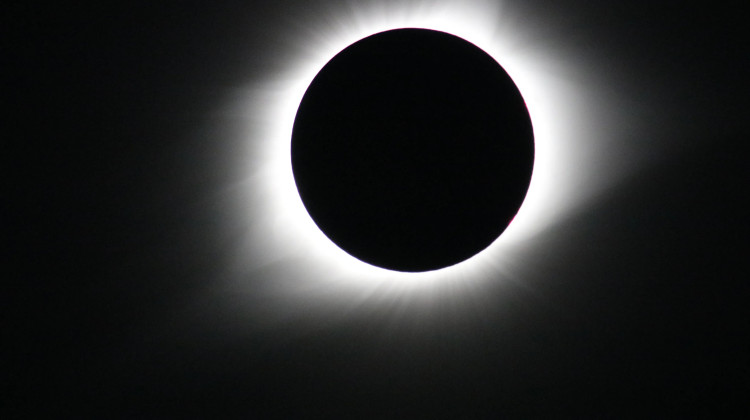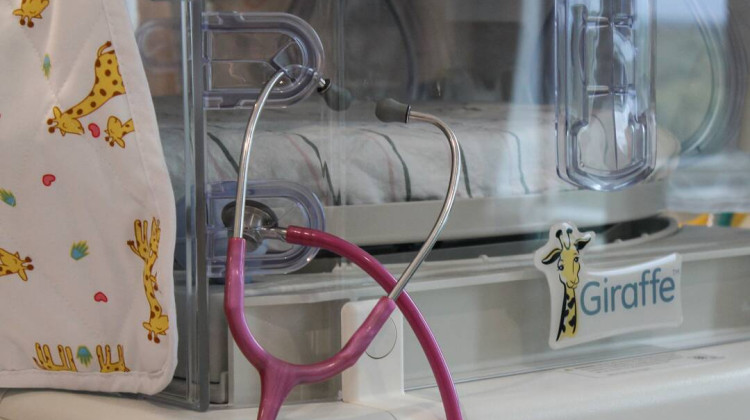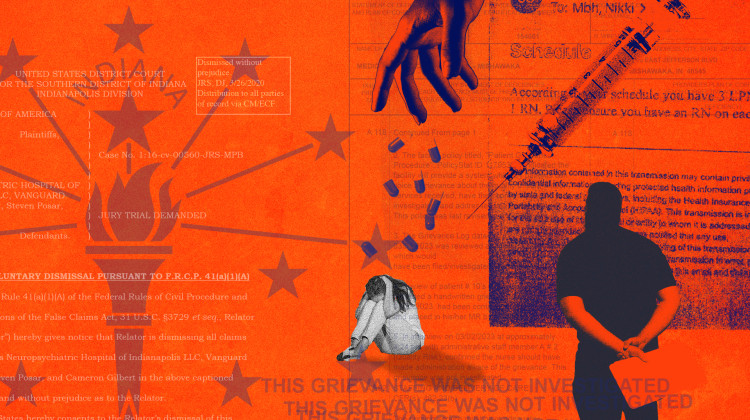A total solar eclipse is when the moon completely obscures the sun’s bright surface.
Parts of the Midwest including Indiana, Ohio, Michigan and Illinois are in the path of totality, which means people there will be able to see the spectacular moment the moon totally covers up the sun.
With the excitement and anticipation surrounding the event on April 8, there are also some risks and precautions that people need to take in order to protect their eyes’ health.
The Checkup from Side Effects Public Media answers some common questions to help you stay safe during the eclipse.
Why do I need special eclipse glasses?
Medical professionals say you must use solar eclipse viewfinders or glasses when you look at the sun at any time before and after totality and during the entirety of the partial solar eclipse to protect your eyes.
The sun’s surface is incredibly bright. If you stare at any part of it –– even a little part –– it can damage the retinal cells in your eyes, which process light and help your brain understand the images you’re looking at. And it may only take a few seconds for damage to happen and it can be permanent.
“You can think of the photoreceptor cells in the retina like little pixels on a TV screen. If you destroy or damage those little cells, it's like causing those pixels to go dark,” said Dr. Hin Cheung, a clinical assistant professor of optometry at Indiana University.
Cheung says the cells don’t regenerate. And the worst part of it is that you may feel fine at the moment but it can take a few hours or even a few days after viewing the eclipse to realize the damage has happened.
How about using my cool sunglasses or maybe my phone camera to view the eclipse?
According to NASA and the American Academy of Ophthalmologists, you shouldn’t do that. Safe solar viewers are thousands of times darker than regular sunglasses or viewfinders.
You also shouldn’t look at the sun through binoculars or telescopes without proper filters –– even if you’re wearing eclipse glasses.
Is there a time when it’s safe to look at the sun without eye protection during the eclipse?
NASA and medical experts say you can look at the sun without eye protection during the roughly 3 minutes and 46 seconds of totality –– that is when the moon is totally blocking the sun. But proper eye protection is a must outside of these few minutes.
“As soon as you see even a little bit of the bright sun reappear after totality, immediately put your eclipse glasses back on or use a handheld solar viewer to look at the sun,” according to NASA.
NASA also says to always supervise children while using solar viewers.
How do I know that my solar eclipse glasses or viewfinders are legit?
Here’s the thing – fakes are out there and you need to be careful.
First, your solar eclipse glasses and other solar viewers must be ISO-compliant. Approved solar eclipse products should have an ISO 12312-2 standard labeling on them.
But the American Astronomical Society says that some products are labeled as ISO-compliant when in fact they are not. They suggest getting your solar eclipse viewing gear from a trusted source.
Some ways to test if your solar eclipse glasses are safe is to try them on.
“You shouldn't be able to see anything through a safe solar filter except the sun itself or something comparably bright, such as the sun reflected in a mirror, a sunlight off shiny metal, the hot filament of an incandescent light bulb, a bright halogen light bulb, a bright-white LED bulb (including the flashlight on your smartphone), a bare compact fluorescent (CFL) bulb, or an arc-welding torch,” according to the AAS.
“All such sources (except perhaps the welding torch) should appear quite dim through a solar viewer.If you can see shaded lamps or other common household light fixtures (not bare bulbs) of more ordinary brightness through your eclipse glasses or handheld viewer, and you're not sure the product came from a reputable vendor, don't use it.”
Also, if you look at the sun through your solar glasses and find it uncomfortably bright, do not use it. You should also look for any scratches or holes in your solar viewer. If you find any, do not use it.
What are some signs and symptoms of eye damage to look out for?
Some symptoms people should look out for include loss of central vision, distorted vision, headache, increased sensitivity to light and changes in the way you see color, according to the Indiana Department of Health. If you experience any of that, it is important to seek medical attention and see an ophthalmologist.
This reporting is informed by Side Effects Public Media's community engagement specialist Lizzy McGrevy. Darian Benson reported this episode of The Checkup by Side Effects Public Media — a regular audio segment on WFYI's daily podcast, WFYI News Now.
Side Effects Public Media is a health reporting collaboration based at WFYI in Indianapolis. We partner with NPR stations across the Midwest and surrounding areas — including KBIA and KCUR in Missouri, Iowa Public Radio, Ideastream in Ohio and WFPL in Kentucky.
 DONATE
DONATE









 Support WFYI. We can't do it without you.
Support WFYI. We can't do it without you.